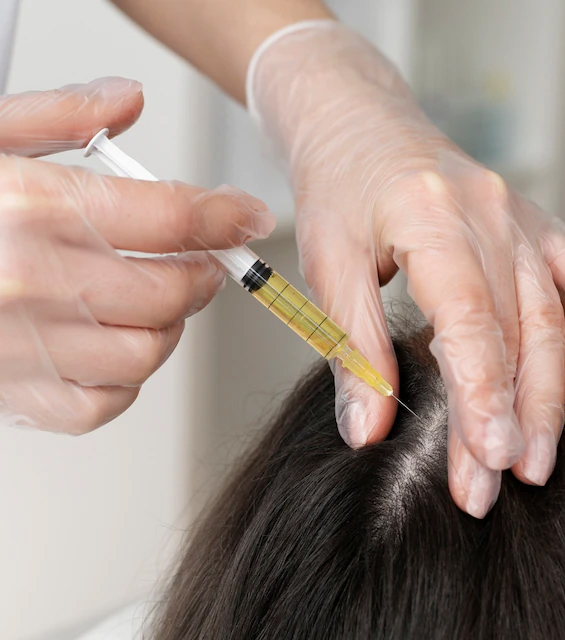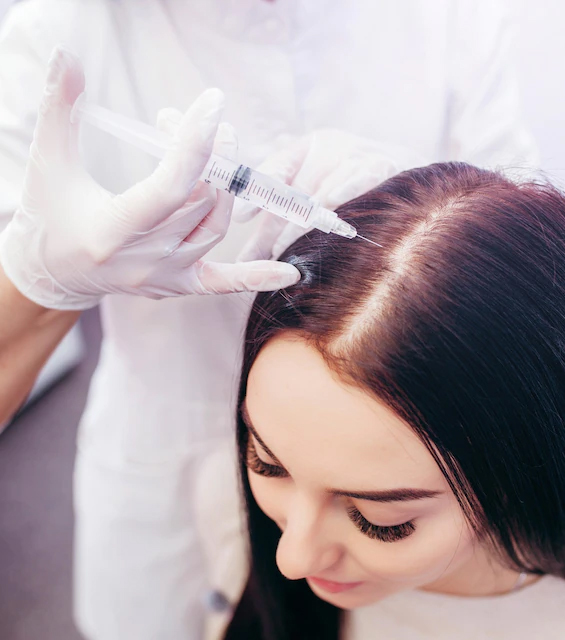- +90 538 050 44 63
-
Cevizlik ebuziya cd. 34142 Bakırköy / İstanbul
Hair loss, which is an important part of appearance and aesthetics, can negatively affect the person both psychologically and socially. While it is considered normal to lose about 100-150 hair strands per day in a healthy individual, shedding above this number may indicate other underlying causes. While genetic factors, skin diseases, vitamin and mineral deficiency and some diseases are among the causes of hair loss, treatment must be applied to the cause of hair loss. In addition, the application of fast and successful treatments such as PRP and mesotherapy that support hair growth also strengthens existing hair, reduces shedding and supports hair growth from hair follicles that do not grow.
100-150 hair strands can be shed daily
Hair loss is a condition where hair is shed more than normal. A hair strand has a three-phase life cycle as growth, rest and shedding, respectively. The strand of hair that completes this cycle is shed and a new strand of hair emerges from the same hair follicle. In a healthy individual, approximately 100-150 strands of hair can be shed per day. If there is more spillage than these numbers, it should be investigated.
Hair loss can have different causes.
Hair loss that is above normal can have different causes such as genetic factors, skin diseases and hair growth disorders, nutritional disorders, vitamin deficiency, mineral deficiency, hormonal problems, some internal diseases, some drugs, chemotherapy, pregnancy, cosmetic products, stress and depression. These reasons are among the most common causes of hair loss.
Hair loss can occur in many different ways, depending on the cause. Sudden hair loss is noticed as excessive hair loss after combing, washing and light pulling. However, when you wake up in the morning, the presence of excessive hair on the pillow is also among the symptoms. Male pattern hair loss, also called “androgenetic alopecia”, is observed in the form of retraction of the anterior hairline and opening in the crown area over time. In the case of "Alopecia areata", which is called alopecia, regional coin-sized spill areas appear in the hair. Hair loss treatment is applied for the determined cause. In addition, applications such as PRP and mesotherapy that support hair growth and drug treatments can be used. In some cases, hair transplantation can be done.
PRP and mesotherapy help reduce hair loss
PRP and mesotherapy applications applied directly to the hair follicles are among the treatment methods that have become increasingly important and popular in recent years, considering both rapid results and treatment success. In PRP treatment, the person's own blood is taken, processed, and the plasma part rich in platelets and growth factors is separated and injected into the hair follicles of the person. In mesotherapy, ingredients rich in amino acids, vitamins and minerals required for hair are injected into the hair follicles in ready-made vials. Both treatment methods reduce hair loss by strengthening existing hair and support hair growth from non-hair follicles. It does not completely stop hair loss, but it minimizes excessive hair loss, resulting in stronger and healthier hair. Patients begin to benefit from these procedures after the third session on average. Although it varies from person to person, its effect lasts between 6 months and 1 year on average.
It should not be applied to pregnant and lactating mothers.
PRP and mesotherapy procedures can be applied to individuals over the age of 18 who experience hair loss. However, it is not applied to those who use blood thinners, those with bleeding disorders, those with infection and inflammation in the area to be treated, pregnant women, nursing mothers and cancer patients. In the application of mesotherapy, if the person is allergic to one of the ingredients in the product, or with urticaria patients, these applications should not be done.
After the procedure, the hair should not be washed for a certain period of time.
It is recommended to have 4-6 sessions of PRP and mesotherapy treatments applied every 2-4 weeks. During the first 6 hours after the procedure, the hair should not be washed, and if swelling occurs, ice should be applied. After the procedure, sauna and steam room should not be entered for two days, and the pool and sea should be avoided for a while due to the risk of infection.
 TR
TR

